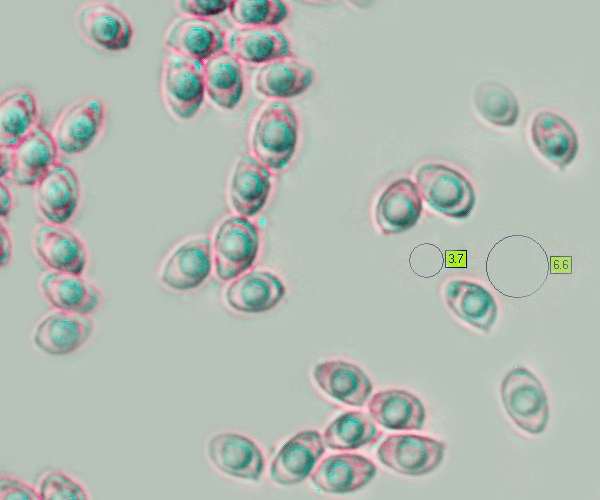Tubaria dispersa (Pers.) Singer - Hawthorn Twiglet
Phylum: Basidiomycota - Class: Agaricomycetes - Order: Agaricales - Family: Inocybaceae
Distribution - Taxonomic History - Etymology - Identification - Culinary Notes - Reference Sources
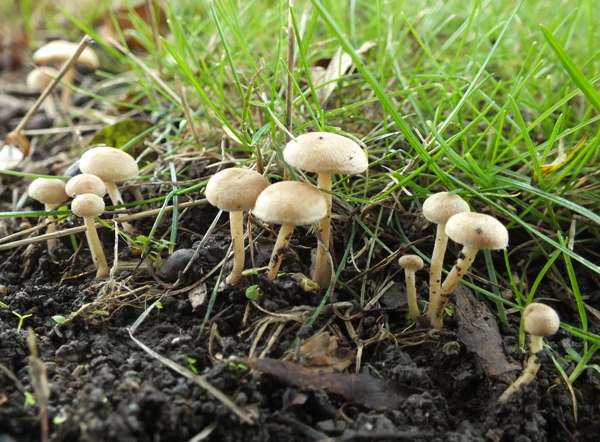
This undistinguished little mushroom betrays its identity primarily by its habitat: under hawthorn trees, bushes and hedgerows. The gregarious Hawthorn Twiglet almost invariably fruits in large and often densely-packed colonies.
Although said to emerge from the decaying seeds (called haws) of various kinds of hawthorns, the stems of these little twiglets appear to be growing in soil - probably because by the time the fruitbodies appear the haws have become humus.
Distribution
Tubaria dispersa is a common and widespread fungus throughout Britain and Ireland. These little toadstools are found in most parts of northern and central mainland Europe, wherever hawthorns grow.
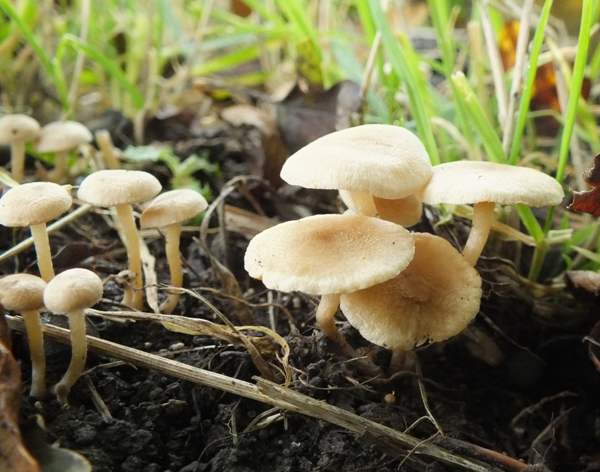
Taxonomic history
In 1828 Christiaan Hendrik Persoon described this little mushroom and gave it the scientific name Agaricus dispersus (at a time when gilled fungi were generally placed into the genus Agaricus, since largely redistributed across many other newer genera).
It was German-American mycologist Rolf Singer who, in 1962, transferred this species to the genus Tubaria, thereby establishing its currently-accepted scientific (binomial) name as Tubaria dispersa.
Synonyms of Tubaria dispersa include Agaricus dispersus Pers., Agaricus autochthonus Berk. & Broome, Naucoria sobria var. dispersa (Pers.) Sacc., Tubaria autochthona (Berk. & Broome) Sacc., and Naucoria autochthona (Berk. & Broome) Kühner & Romagn.
Etymology
Tubaria is a small genus of about 20 species worldwide. The genus name may refer to a pipeline or connection, while the specific epithet dispersa is derived from the Latin adjective dispersus meaning dispersed or scattered.
Identification guide
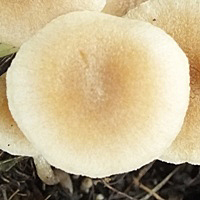 |
CapThe smooth cap, initially convex and then flattened and eventually slightly centrally depressed, has a slightly striate marin and ranges from 0.5–2cm in diameter. Its surface is minutely felty and coloured ochre-buff, and the cap flesh is whitish.. |
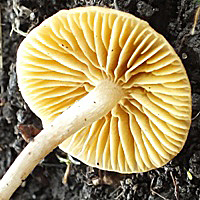 |
GillsThe crowded, adnexed or adnate gills start off pale lemon and develop an ochraceous tinge as the spores mature. Stem1.5-3cm long and 1-2mm in diameter, white or very pale ochre, tapering towards the base; often wavy. The stem flesh is whitish. |
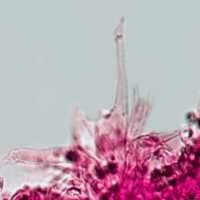 |
CheilocystidiaSimple, cylindrical to clavate, sometimes capitate, 20-35 x 4-10μm. |
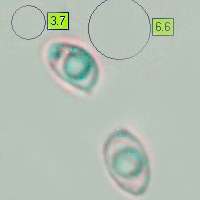 |
SporesEllipsoidal, surface minutely roughened, 4.5-7.5 x 2.5-5µm. Spore printOlivaceous. |
Odour/taste |
Not distinctive. |
Habitat & Ecological role |
Beneath hawthorn trees and bushes. |
Season |
Late summer and autumn in Britain and Ireland. |
Similar species |
Tubaria conspersa, the Felted Twiglet, has a finely scaly cap and larger spores. The white variety of Inocybe geophylla is similar but paler. |
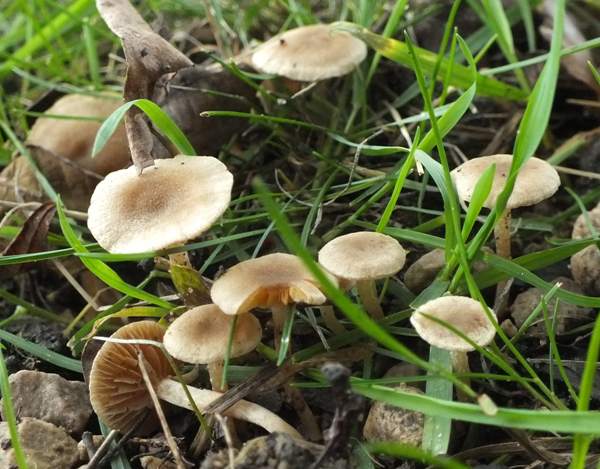
Culinary Notes
This little mushroom is generally considered inedible.
Reference Sources
BMS List of English Names for Fungi
Dictionary of the Fungi; Paul M. Kirk, Paul F. Cannon, David W. Minter and J. A. Stalpers; CABI, 2008
Taxonomic history and synonym information on these pages is drawn from many sources but in particular from the British Mycological Society's GB Checklist of Fungi.
Fascinated by Fungi. Back by popular demand, Pat O'Reilly's best-selling 450-page hardback book is available now. The latest second edition was republished with a sparkling new cover design in September 2022 by Coch-y-Bonddu Books. Full details and copies are available from the publisher's online bookshop...
